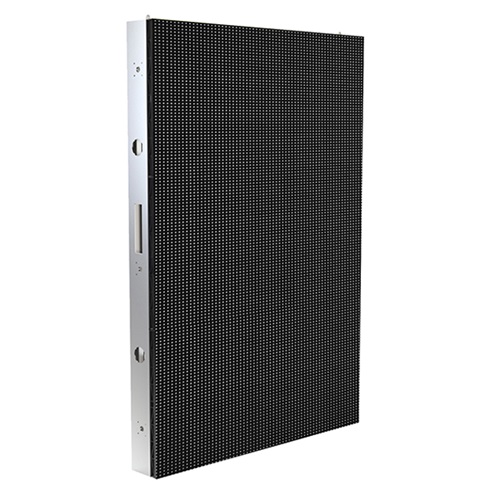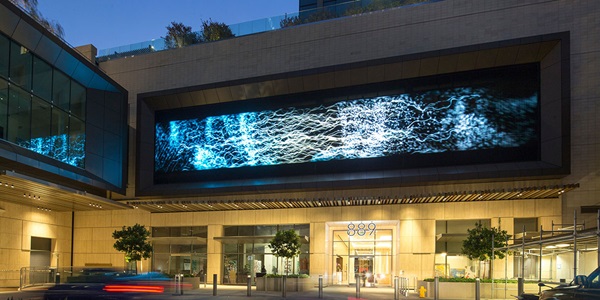Outdoor displays don't operate in a vacuum—they compete with sunlight, rain, wind, and urban distractions every second. Whether you're installing a billboard near a freeway or a screen on a high-rise façade, the one question that matters most is: can it be seen—clearly and consistently?
Clarity, especially in sunlight, isn't just a feature. It's the foundation. In this article, we explore what makes outdoor LED display solutions stand out in both brightness and durability, and why choosing the right system is critical to long-term performance.

Sunlight doesn't just brighten the surroundings. It can overpower screens. It creates glare. It fades color. It turns vibrant displays into dull rectangles.
Most outdoor activity happens during the brightest part of the day. That's when people are outside. That's when messages need to land. If the screen disappears at noon, it fails when it matters most.
Think about a large LED display by the roadside. If drivers can't read it in direct sun, what's the point? Think of a shop with a dim window screen. No one stops to look. No one remembers.
Brightness is measured in nits. Indoor screens use around 500 to 800 nits. That's enough inside. But outside? It's nowhere near sufficient.
Modern outdoor LED displays reach 5,000 to 10,000 nits. That's ten times more powerful. It's what makes images stay clear in daylight. Every pixel punches through.
But power isn't the only thing. These screens are smart. They adjust automatically. When the light outside gets stronger, the screen gets brighter. When it dims, the screen saves energy. No need for manual changes.
There's more. Anti-glare coatings reduce reflection. High refresh rates keep motion fluid. The result? Content that's always sharp and easy to see—even when the sun is at its peak.

Sunlight is one challenge. Weather is another. Rain, wind, dust, heat—each one threatens outdoor electronics. A weak screen won't last long.
Top displays use sealed enclosures. Water can't get in. Dust can't settle. Many have IP65 or IP67 ratings. That means full protection from particles and strong water jets. Some can even handle temporary submersion.
Casing materials matter too. Rust-resistant aluminum and powder-coated parts prevent corrosion. This is critical near the sea or in humid zones.
Sunlight also damages plastics over time. So, high-end displays use UV-resistant coatings. They protect color and surface quality for years.
Heat is a silent killer. Inside every screen are cooling systems. Some rely on natural airflow. Others use fans. These systems stop overheating—even during long summer days.
These features work together. They keep the screen running when everything outside says it shouldn't.
Not every screen faces the same demands. But all of them need to perform. Whether it's a billboard, a retail sign, or a transit update board—the audience expects clarity. Always.
A roadside billboard needs long-range visibility. Drivers only glance for a second. The screen must be bright, readable, and low-maintenance.
In a shopping street, things change. Viewers are close. The display must be detailed. Pixel spacing needs to be tighter. Contrast must hold against ambient lighting.
Transit stations bring another challenge. Screens serve a stream of people. Timely updates matter. Failures are costly. Displays here need wide angles, strong brightness, and stable playback.
Then there's the stadium. Screens must survive the weather. But also, they must sync with scoreboards, cameras, and control systems. Any lag or blackout ruins the experience.
While display specifications may vary, each environment requires a solution tailored to its operational conditions and visual demands.

Today's LED screens do more than display. They adapt. They react. They help you manage them from far away.
Brightness sensors adjust lighting in real time. You don't need to be there. The screen figures it out.
Remote systems let you update content from anywhere. No USB sticks. No ladders. One interface. Multiple screens.
If a module fails, the system notifies you. You can plan repairs before the failure spreads. That reduces downtime. It saves money.
At night, the screen dims. It doesn't blind passersby. It saves energy. During a storm, the panel resists damage. If a problem appears, you know instantly.
While the technical requirements may vary, every application demands a display tailored to its specific conditions.
Pixel pitch decides how sharp an image looks. A small pitch means more detail. That's best for close viewing. A bigger pitch works well for large-scale visuals seen from far away.
Contrast matters too. Without it, colors blur together. Good screens use deep black modules. They absorb light. They make colors pop.
Then there's color consistency. The red on the left should match the red on the right. Viewers may not say it, but they notice. Consistency builds trust.
Lastly, viewing angle. Not everyone stands in front of the display. Good screens stay readable even from the side. Some offer 160° horizontal visibility.
Each factor supports the message. Together, they make the difference between a passing glance and real impact.

Outdoor displays must be strong. But they also need to be practical. Installation is often complex. Good design makes it easier.
For tight spaces, front access designs work best. You don't need to get behind the panel to repair it. That's ideal for walls or street-level screens.
Freestanding displays allow rear access. They offer more space and flexibility. Maintenance becomes faster.
Modular panels save time. If one fails, you replace that piece. Not the whole screen. That cuts cost and reduces disruption.
Cable design matters too. Hidden routing and weatherproof seals reduce faults. Structured frames withstand wind. They meet engineering codes. They stay up when it counts.
These details don't show in the ad. But they matter. A screen that installs easily and stays stable protects your investment.
Each outdoor space is unique. Sunlight angles. Humidity. Viewing distance. Mounting surface. There's no universal answer.
Customization fills the gap. It's not about luxury. It's about fit. The right screen fits the environment. The message. The expectation.
Need high brightness for a desert city? Done. Want extra reinforcement for a windy rooftop? No problem. Tight spacing for close-up viewers? That's available.
Some displays include interactivity. Some blend into buildings. Some follow curves. Others integrate with audio or cameras.
Outdoor LED displays must withstand direct sunlight, harsh weather, and continuous operation without performance loss. Achieving this requires more than brightness—it demands durable construction and smart control systems working in unison.
Choosing a purpose-built solution ensures clarity, reliability, and lasting value. In critical environments, consistent visibility is not a feature—it's a fundamental requirement.
Contact us at led@visionledpro.com.
By continuing to use the site you agree to our privacy policy Terms and Conditions.